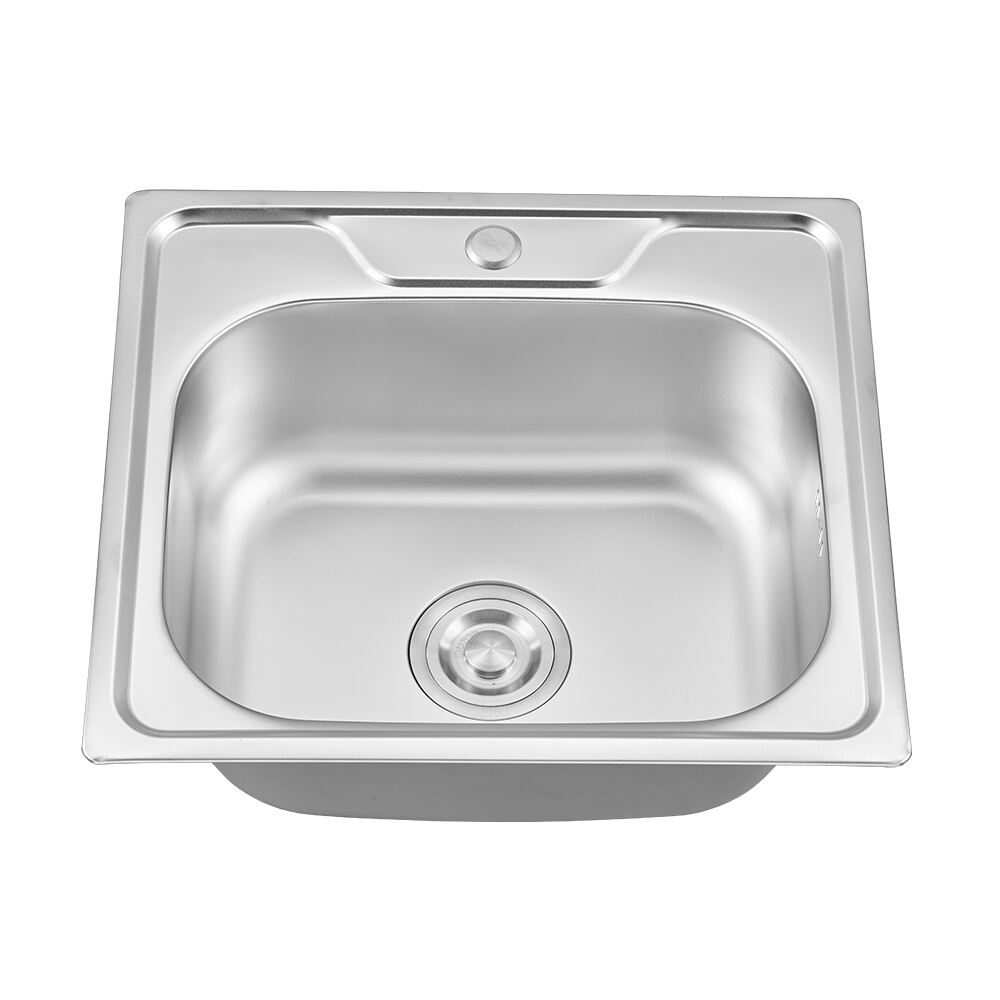Understanding the Superior Durability of Modern Kitchen Sink Materials
The heart of every kitchen lies in its functional elements, and perhaps none is more crucial than the sink. Among the various materials available today, 304 kitchen sinks have emerged as a leading choice for homeowners seeking longevity and durability. These premium stainless steel sinks represent the perfect balance of strength, corrosion resistance, and aesthetic appeal, making them a compelling option for modern homes.
When investing in a kitchen sink, durability becomes a primary consideration. After all, this fixture endures constant exposure to water, cleaning agents, and daily wear and tear. Understanding how different materials stack up against each other in terms of longevity can help make an informed decision that will serve your kitchen needs for years to come.
Material Composition and Durability Factors
The Science Behind 304 Stainless Steel
304 kitchen sinks are crafted from a specific grade of stainless steel that contains approximately 18% chromium and 8% nickel. This composition creates an incredibly robust material that naturally resists corrosion and maintains its appearance even after years of use. The chromium content forms a protective oxide layer that continuously regenerates when scratched, ensuring lasting protection against rust and deterioration.
The molecular structure of 304 stainless steel also contributes to its exceptional durability. The material's high tensile strength means it can withstand significant impact without denting or warping, while its non-porous surface prevents bacterial growth and makes cleaning effortless.
Comparative Analysis with Traditional Materials
When compared to other sink materials like porcelain, cast iron, or lower-grade stainless steel, 304 kitchen sinks demonstrate superior resilience. While porcelain sinks may chip or crack under impact, and cast iron sinks can rust if their enamel coating wears away, 304 stainless steel maintains its integrity throughout years of service. Even in comparison to other grades of stainless steel, the 304 grade shows exceptional resistance to common household chemicals and acidic foods.
The material's inherent properties also make it highly resistant to heat damage, unlike composite or acrylic sinks that may warp or discolor when exposed to hot pots and pans. This heat resistance ensures that 304 kitchen sinks maintain their appearance and structural integrity even in homes where cooking is a frequent activity.
Long-term Performance and Value
Maintenance Requirements and Longevity
One of the most significant advantages of 304 kitchen sinks is their minimal maintenance requirements. Unlike copper sinks that need regular polishing or granite composite sinks that require specific cleaning products, 304 stainless steel needs only basic cleaning with standard household detergents to maintain its appearance. This ease of maintenance contributes significantly to the sink's overall lifespan.
With proper care, 304 kitchen sinks can easily last 15-20 years or more, making them one of the most durable options available. This longevity translates to excellent value for money, especially when considering the relatively modest initial investment compared to more expensive materials like copper or natural stone.
Environmental Impact and Sustainability
The durability of 304 kitchen sinks also has positive environmental implications. Because these sinks last longer, they need to be replaced less frequently, reducing waste and resource consumption. Additionally, stainless steel is 100% recyclable, making it an environmentally responsible choice for eco-conscious homeowners.
The manufacturing process of 304 stainless steel is also relatively energy-efficient compared to the production of other sink materials, further reducing its environmental footprint. This combination of longevity and recyclability makes 304 kitchen sinks a sustainable choice for modern homes.
Design Versatility and Aesthetic Longevity
Timeless Appeal and Style Options
The aesthetic versatility of 304 kitchen sinks contributes to their long-term value. The clean, modern appearance of stainless steel complements virtually any kitchen design style, from contemporary to traditional. Unlike trendy materials or colors that may fall out of fashion, the classic look of 304 stainless steel remains relevant through changing design trends.
These sinks are available in various finishes, from bright polished to brushed satin, allowing homeowners to choose an option that best suits their kitchen's aesthetic while maintaining the material's inherent durability. The neutral appearance of stainless steel also means that these sinks can seamlessly integrate with future kitchen updates or renovations.
Adaptability to Modern Kitchen Uses
Modern kitchens serve multiple functions beyond traditional cooking and cleaning, and 304 kitchen sinks adapt well to these evolving needs. Their durability makes them ideal for tasks ranging from food preparation to plant watering, while their resistance to staining means they maintain their appearance even with diverse use patterns.
The material's ability to withstand the demands of modern kitchen appliances and tools, such as garbage disposals and water filtration systems, further enhances its long-term utility. This adaptability ensures that 304 kitchen sinks remain functional and relevant as kitchen technology and usage patterns continue to evolve.
Frequently Asked Questions
How can I identify a genuine 304 grade stainless steel sink?
Genuine 304 kitchen sinks will typically have certification markings and documentation from recognized testing authorities. Look for magnetic properties - 304 stainless steel is generally non-magnetic or very weakly magnetic. Reputable manufacturers will also provide detailed material specifications and grade information in their product documentation.
What daily maintenance is required for 304 kitchen sinks?
Regular maintenance is simple - wipe the sink dry after use to prevent water spots, clean with mild dish soap and warm water daily, and occasionally use a stainless steel cleaner to maintain shine. Avoid abrasive cleaners, steel wool, or bleach-based products that could damage the protective surface.
Are 304 kitchen sinks worth the investment compared to lower-grade options?
While 304 kitchen sinks may have a higher initial cost than lower-grade alternatives, their superior durability, corrosion resistance, and longevity make them a cost-effective choice in the long run. They typically require less maintenance, resist damage better, and maintain their appearance longer, providing better value over their lifetime.



